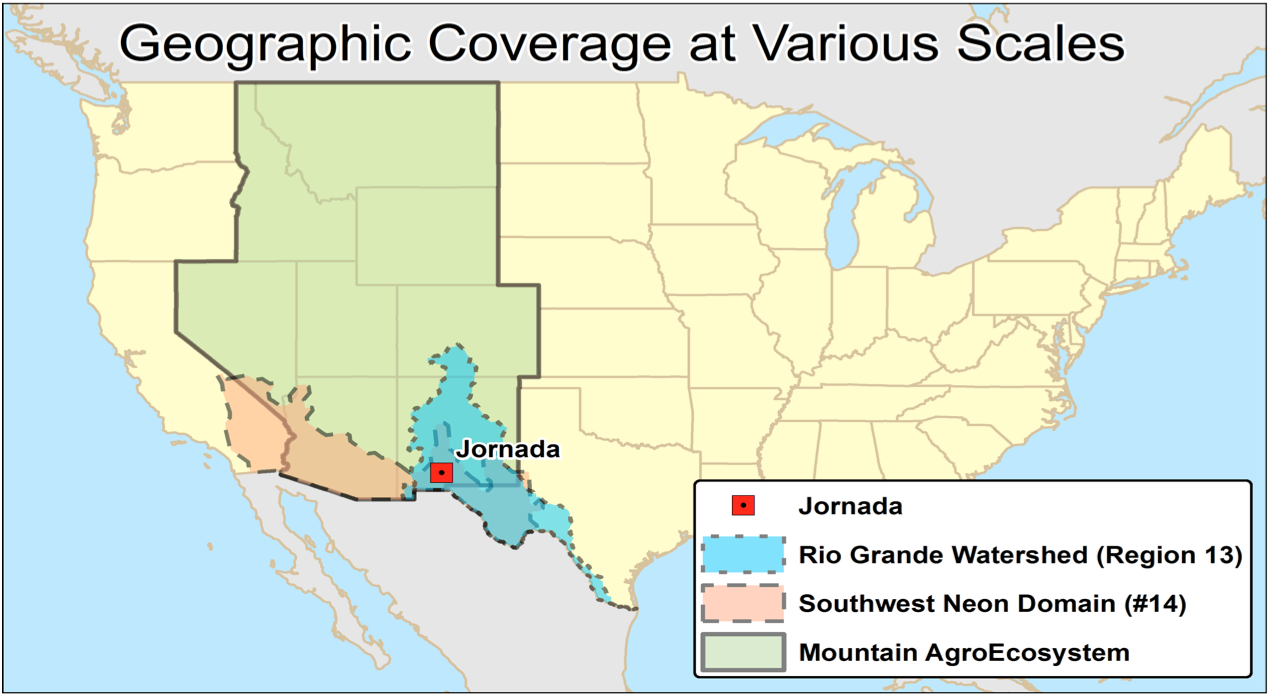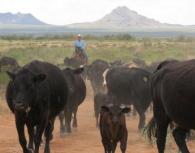Unique Elements: Approximately 1/3rd of the world’s ice-free land surface is arid and nearly 1/6th of the world’s population of 7 billion live within or on the margins of arid lands. In this sense, the Jornada, as an arid land based research facility, is not unique. However, the Jornada is uniquely located within the Chihuahuan Desert, the largest desert in North America. The region covers nearly 650,000 sq. kilometers and is one of the most biologically diverse arid landscapes in the world. The Chihuahuan Desert includes nearly 1/3 of the world’s cacti species, over 180 species of reptiles, and more than 3,000 species of plants. The only North American desert east of the Continental Divide, the region is a mosaic of enclosed basins and isolated mountain ranges that creates an extremely heterogeneous landscape that has both terrestrial and freshwater environments (Wauer and Riskind 1977). The Jornada basin is within the northern portion of the Chihuahuan desert and includes a unique subset of the biological diversity that characterizes this region. There are over 500 plant species, and particularly rich biota of animals. For example, approximately one-tenth of North American ant species are found within the Jornada Basin (Whitford and Bestelmeyer 2006). Fortunately, many of the floral and fauna are well documented due to the history of long-term research within this basin (Havstad et al., 2006).
Coverage at Various Scales: The Jornada is unique in that it is the only ARS long term research site to be within the following combination of geographic regions within the US (Fig. 9):
- the Mountain agroecosystem,
- the Southwest Neon Domain (#14), and
- the Rio Grande Region Watershed Unit Level 1 (region 13).

Fig. 9. Jornada location relative to important geographic regions within the US.




